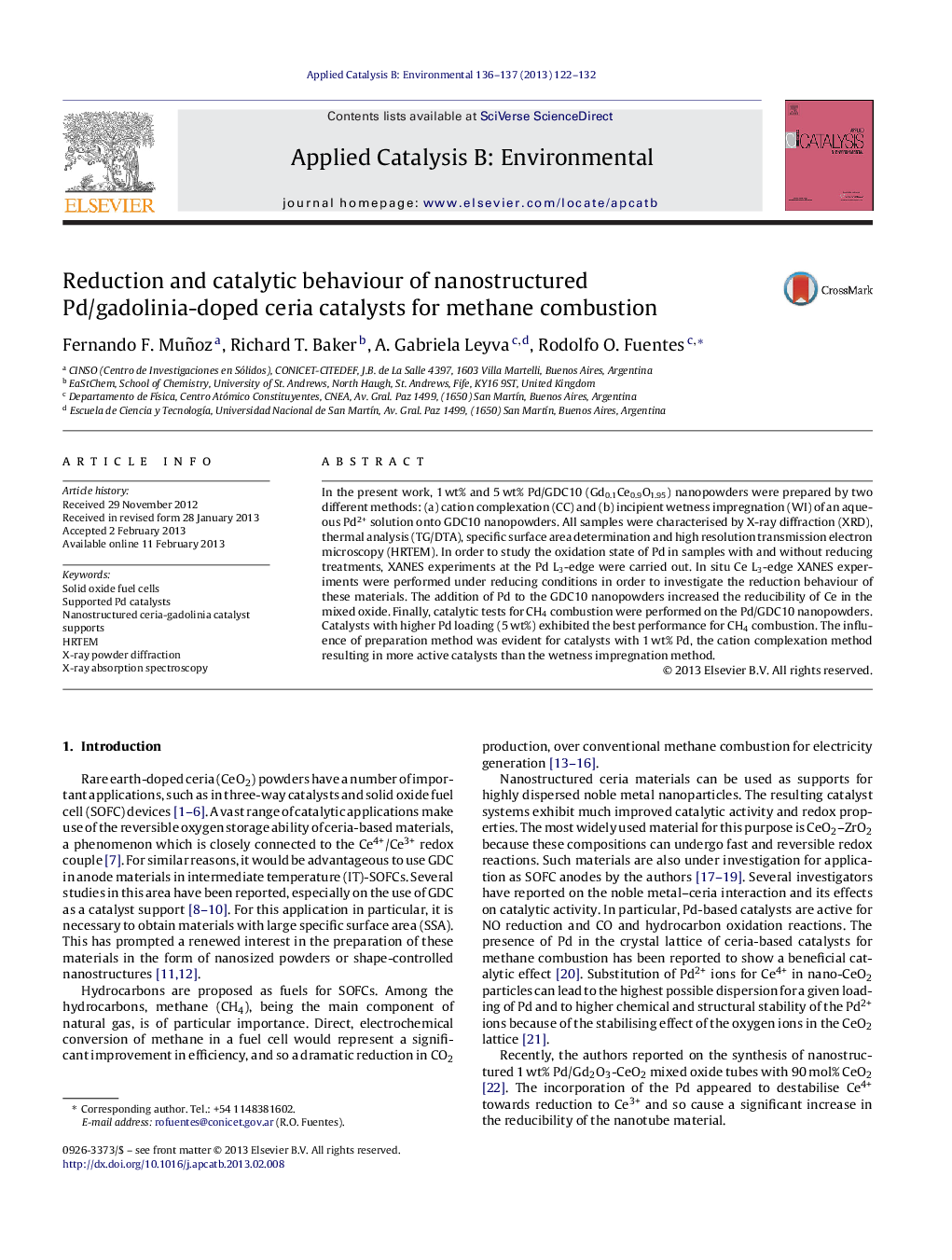| Article ID | Journal | Published Year | Pages | File Type |
|---|---|---|---|---|
| 46318 | Applied Catalysis B: Environmental | 2013 | 11 Pages |
In the present work, 1 wt% and 5 wt% Pd/GDC10 (Gd0.1Ce0.9O1.95) nanopowders were prepared by two different methods: (a) cation complexation (CC) and (b) incipient wetness impregnation (WI) of an aqueous Pd2+ solution onto GDC10 nanopowders. All samples were characterised by X-ray diffraction (XRD), thermal analysis (TG/DTA), specific surface area determination and high resolution transmission electron microscopy (HRTEM). In order to study the oxidation state of Pd in samples with and without reducing treatments, XANES experiments at the Pd L3-edge were carried out. In situ Ce L3-edge XANES experiments were performed under reducing conditions in order to investigate the reduction behaviour of these materials. The addition of Pd to the GDC10 nanopowders increased the reducibility of Ce in the mixed oxide. Finally, catalytic tests for CH4 combustion were performed on the Pd/GDC10 nanopowders. Catalysts with higher Pd loading (5 wt%) exhibited the best performance for CH4 combustion. The influence of preparation method was evident for catalysts with 1 wt% Pd, the cation complexation method resulting in more active catalysts than the wetness impregnation method.
Graphical abstractFigure optionsDownload full-size imageDownload as PowerPoint slideHighlights► 1 wt% and 5 wt% Pd/GDC10 nanopowders were prepared by cation complexation (CC) and incipient wetness impregnation (WI). ► Reduction behaviour was studied by in situ synchrotron radiation techniques. ► The addition of Pd increased the reducibility of the Ce in the mixed oxide. ► Catalysts with 5 wt% Pd loading exhibited the best performance for CH4 combustion. ► 1 wt% Pd nanopowders prepared by CC resulting in more active catalysts than those prepared by the WI method.
